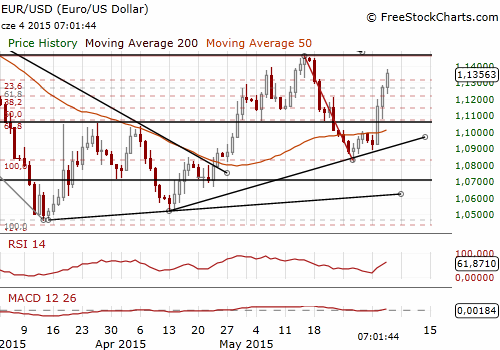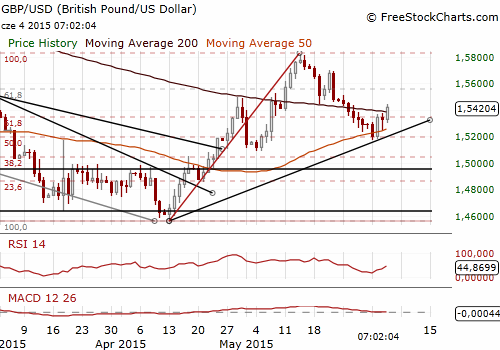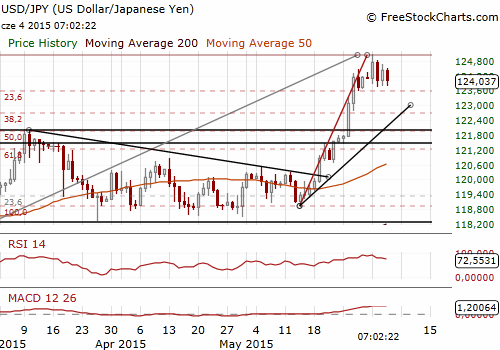GROWTHACES.COM Forex Trading Strategies
Taken Positions
NZD/USD: long at 0.7160, target 0.7350, stop-loss 0.7060, risk factor ***
CHF/JPY: long at 131.10, target 133.70, stop-loss 133.10, risk factor **
Pending Orders:
EUR/USD: sell at 1.1410, if filled – target 1.1220, stop-loss 1.1490, risk factor **
GBP/USD: sell at 1.5500, if filled – target 1.5300, stop-loss 1.5590, risk factor **
USD/CHF: buy at 0.9245, if filled – target 0.9410, stop-loss 0.9180, risk factor **
AUD/USD: buy at 0.7610, if filled – target 0.7900, stop-loss 0.7520, risk factor **
EUR/GBP: buy at 0.7260, if filled – target 0.7450, stop-loss 0.7210, risk factor ***
EUR/JPY: sell at 141.70, if filled – target 138.50, stop-loss 142.70, risk factor ***
EUR/CAD: sell at 1.4200, if filled – target 1.3980, stop-loss 1.4300, risk factor **
EUR/CHF: buy at 1.0410, if filled – target 1.0680, stop-loss 1.0320, risk factor **
AUD/NZD: sell at 1.1000, if filled – target 1.0800, stop-loss 1.1100, risk factor ***
EUR/USD: Will Non-Farm Payrolls Trigger Profit Taking Tomorrow?
(sell at 1.1410)
- The European Central Bank kept monetary policy steady, as widely expected. ECB President Mario Draghi said the central bank sees no reason to adjust its monetary policy stance in response to a recent rise in bond yields in Europe The ECB released its new macroeconomic forecasts. The head of the ECB said that the Eurozone economy has lost some momentum.
- Data this week showed Eurozone inflation turned positive in May and the closely-watched core rate jumped to 0.9%, prompting the bank to lift its full-year forecast to 0.3% from the unchanged prices seen in March. Inflation next year is seen at 1.5% then rising to 1.8% in 2017, in line with earlier projections, but only if the money printing programme is carried out in full, Draghi said. The bank sees GDP growth at 1.5% this year, the same as it saw in March. That would be the fastest growth rate since 2011, when the economy expanded by 1.6%. The ECB kept GDP growth forecast for 2016 unchanged at 1.9%, but lowered the forecast for 2017 to 2.0% from 2.1% in March.
- Draghi rejected any suggestion that the money printing operation should end ahead of schedule and said it was too early to even discuss how it would end. ECB president also urged a deal with Greece, which is facing default without aid, in order to keep it in the Eurozone.
- Greece is due to pay back the IMF EUR 300 million of loans on June 5. Greece has three other repayments, totalling about EUR 1.23 billion, due to the IMF in June after the one on Friday. Greek Prime Minister Alexis Tsipras said early on Thursday after late-night talks with senior EU officials that Greece was close to a deal with its creditors and that Athens would make a payment due to the IMF on Friday. Tsipras's remarks came at the end of the working meeting held with president of the European Commission, or EC, Jean-Claude Juncker, and Eurogroup president Jeroen Dijsselbloem in Brussels. The European Commission said that the meeting has been good and constructive and that intense work will be continued to reach an agreement between Athens and international creditors.
- The Fed report, known as the beige book, showed that the US economy was growing at a moderate pace in most regions of the country in April and May. In its latest survey of business conditions around the country, the Fed said that manufacturing activity held steady or increased, except in the energy industry. Some companies laid off workers and cut back on drilling activities in response to the big fall in oil prices over the past year. The report noted that consumer spending rose in all districts except Richmond and New York. In April, the Fed downgraded its view of the US economy to reflect the impact of an unusually harsh winter. The beige book indicates that policymakers are likely to upgrade the outlook at their June meeting.
- The EUR rallied across the board as German Bund yields reached their highest in eight months, extending gains made after the European Central Bank played down the impact of bond market volatility. The spread between German Bund yields and the equivalent US Treasury yields narrowed to its tightest in four months. The EUR had already posted its biggest two-day gains in over six years, on the back of a surprise return to inflation in the Eurozone and after ECB President Mario Draghi indicated the central bank would not add more stimulus because of rising yields. News overnight that Greece might be coming close to a deal with its creditors and that it would make a payment due to the IMF on Friday had also positive impact on the EUR.
- The EUR/USD broke above 1.1315 (76.4% retrace of the 1.1468-1.0819 May fall). Investors are focused on Friday’s US non-farm payroll data. Wednesday’s ADP figures suggest we shall expect rather strong reading, which would be a good opportunity to take profit on EUR longs. That is why we are looking to sell EUR/USD at 1.1410. This is only the short-term strategy. We do not change our medium-term bullish outlook on the EUR/USD.

Significant technical analysis' levels:
Resistance: 1.1400 (psychological level), 1.1450 (high May 18), 1.1468 (high May 15)
Support: 1.1230 (session low Jun 4), 1.1215 (hourly low Jun 3), 1.1121 (hourly low Jun 3)
GBP/USD: BOE Kept Rates Unchanged, As Widely Expected
(sell at 1.5500)
- The Bank of England kept interest rates at a record low of 0.5% today, as widely expected. The Bank issued no statement after its decision was announced. Minutes of the meeting are due to published in just under two weeks' time.
- The nine-strong Monetary Policy Committee has voted unanimously to keep rates on hold in all its previous meetings in 2015. Two of its members dropped their votes for a rate hike in January in response to the oil price plunge.
- Last month the BoE cut its forecasts for British economic growth over the next three years. BoE Governor Mark Carney said it was "possible" interest rates will be higher in a year's time, as expected by markets, although the central bank would not raise them too soon and risk slowing the economy.
- In our opinion the first hike will take place in the first quarter 2016, while the market sees the first hike in the middle of next year.
- The GBP fell to its weakest in four weeks against a buoyant EUR today ,with rate differentials moving in favour of the EUR as German Bund yields surged to their highest since September. However, the GBP recovered against the USD. In our opinion the GBP/USD is likely to fall in the short term given sentiment towards the UK economy weakening (confirmed by worse-than-expected PMI data this week) and possible strong US non-farm payroll figures tomorrow.
- We have placed sell order at 1.5500. If the order is filled we will set the target at 1.5300.

Significant technical analysis' levels:
Resistance: 1.5437 (high May 27), 1.5475 (high May 26), 1.5500 (psychological level)
Support: 1.5304 (session low Jun 4), 1.5252 (low Jun 3), 1.5200 (psychological level)
USD/JPY: Short Closed Due To Non-Farm Payrolls Risk
(short closed at 124.00)
- Bank of Japan Governor Haruhiko Kuroda advanced central banks faced policy challenges as last year's oil price slump slowed headline inflation and threatened to hurt public expectations that prices will rise in the future. He said inflation expectations are one of the most important variables for the conduct of unconventional monetary policy.
- The Bank of Japan's new board member Yutaka Harada said recent declines in the JPY mean the currency is in a “pretty good place”. In his opinion the benefits of a weak JPY outweigh the disadvantages because this increases corporate earnings, exports and helps create jobs. Harada reiterated the BOJ's view that consumer prices are likely to meet its 2% inflation target around the first half of fiscal 2016, and additional easing is not needed as long as the mechanism for higher prices remains intact.
- We closed our USD/JPY at 124.00 today and took only a small profit as we see a risk for this position from possible better non-farm payrolls data tomorrow. We stay sideways now.

Significant technical analysis' levels:
Resistance: 124.57 (session high Jun 4), 124.68 (high Jun 3), 125.07 (high Jun 2)
Support: 123.79 (low Jun 3), 123.75 (low Jun 2), 123.60 (low May 29)
Source: Growth Aces Forex Trading Strategies
